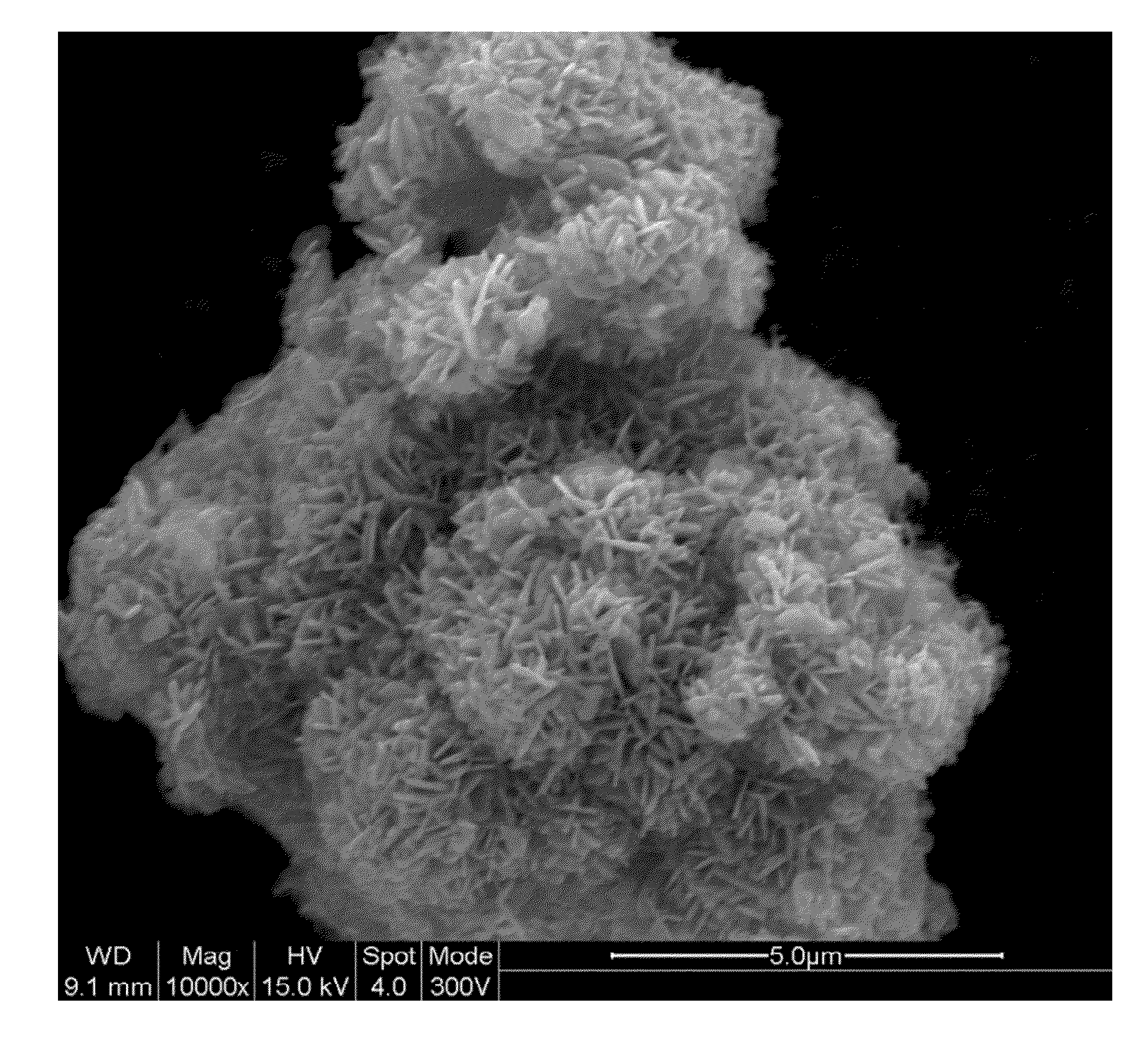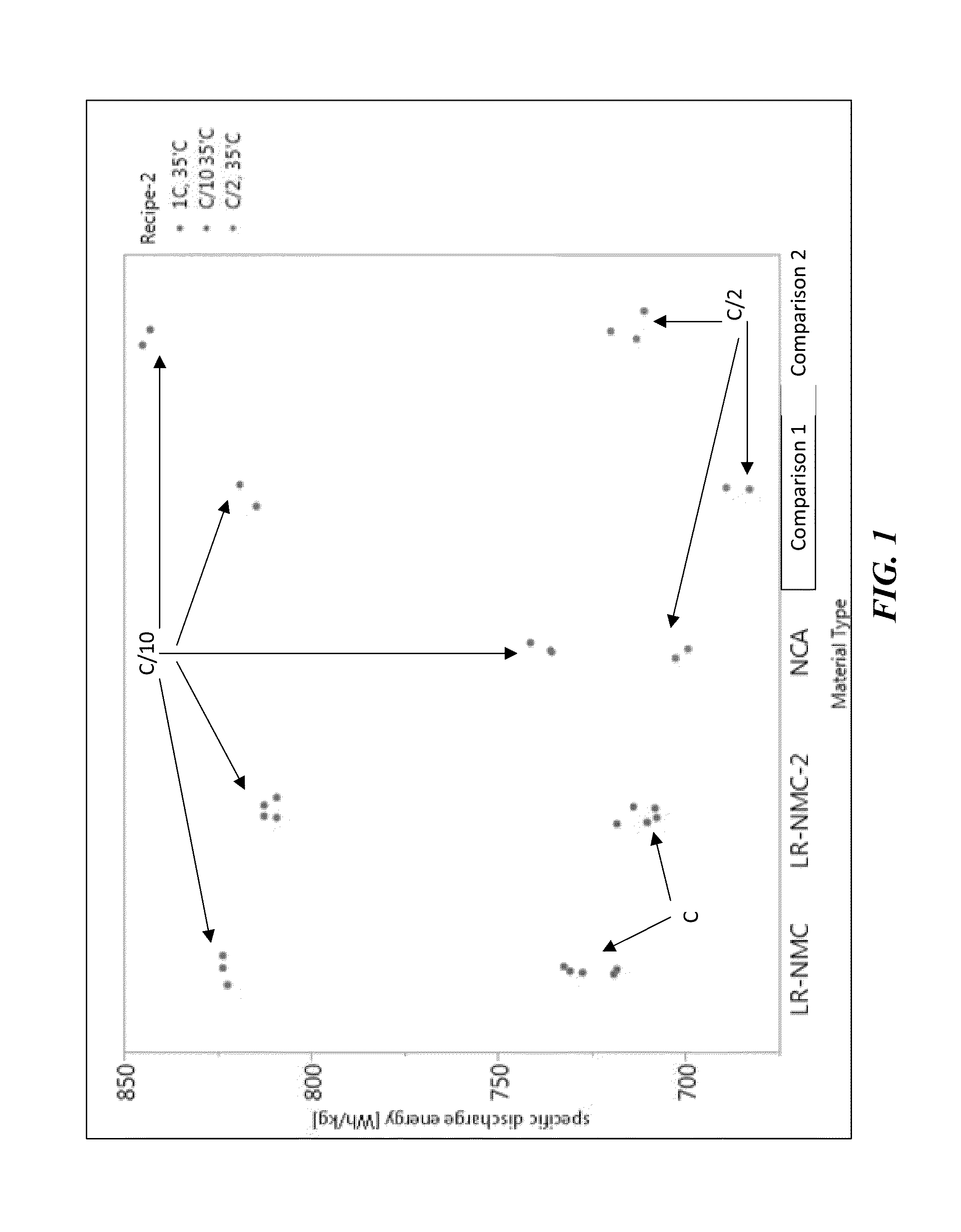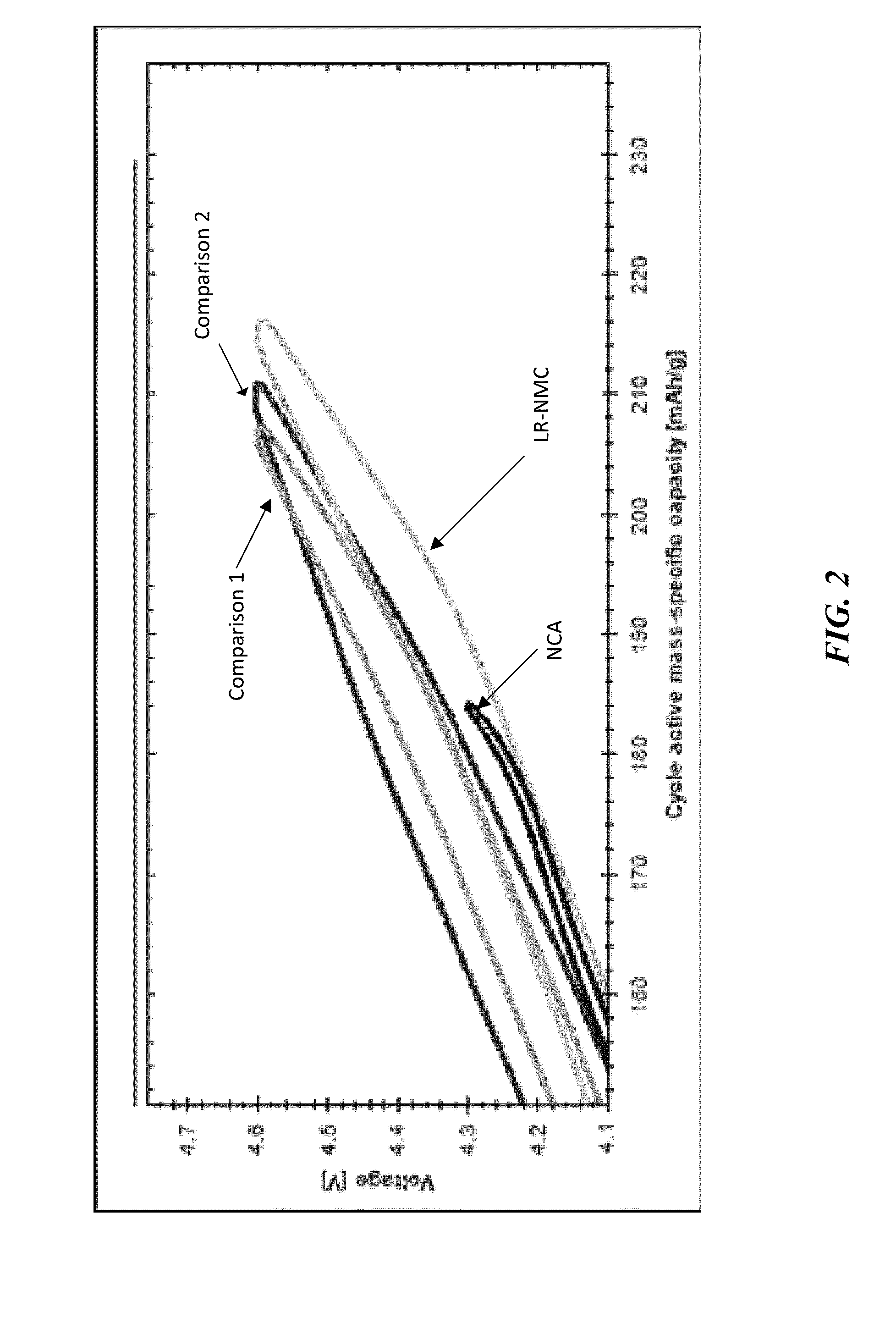Lithium rich nickel manganese cobalt oxide (lr-nmc)
- Summary
- Abstract
- Description
- Claims
- Application Information
AI Technical Summary
Benefits of technology
Problems solved by technology
Method used
Image
Examples
example 1
A. Example 1
Synthesis of LR-NMC
[0199]LR-NMC and LR-NMC-2 were made by the following generalizable synthetic protocol. As used in this example, LR-NMC=Li1+xNi0.5Mn0.25Co0.25O2, LR-NMC-2=Li1+xNi0.6Mn0.20Co0.20O2.
[0200]Nickel (II) sulfate hexahydrate, manganese (II) sulfate monohydrate, cobalt (II) sulfate heptahydrate were dissolved to make a 100-ml solution with total metal concentration of 2.0M with mole ratio of Ni:Mn:Co=0.5:0.25:0.25 (other ratios included, but where not limited to Ni:Mn:Co=0.6:0.2:0.2; Ni:Mn:Co=0.5:0.5:0.05). Specifically, 26.67 g of nickel sulfate, 8.45 g of manganese sulfate and 14.05 g of cobalt sulfate were added to the required volume of deionized water to make a solution of 100-ml (final volume). The dissolved metal salts were kept under argon to prevent a change of valence. This solution was added slowly to a warm flask containing 170-ml 0.3M NH4OH solution while simultaneously adding 4M NaOH solution to maintain the solution's pH between 10 and 11. Approx...
example 2
B. Example 2
Electrochemical Testing of LR-NMC
[0205]A 3032 coin cell battery was made using the material synthesized according to Example 1. The cathode was formulated (as standard practice in the lithium ion battery field) with a 90:5:5 composition by weight, where 90 wt % is active material (per example 1), 5 wt % is carbon black (Timcal C65), 5 wt % high-molecular weight PVDF (polyvinyldifluoride resin, Solvay). The material was dispensed as a 40wt % slurry in N-methyl-2-pyrolidone as the solvent, onto a 20 μm aluminum foil. After drying to remove the solvent, the film was punched in either 14-mm or 15-mm diameter disks for assembly into the coin cell stack. Whatman filter paper, GF-D (GE Lifesciences) punched into a 16-mm disk was used to separate the cathode from a 350-um lithium metal foil anode. The electrolyte used in the coin cell battery was 1.0M LiPF6 in ethylene carbonate and ethylmethylcarbonate in a 30:70 mol ratio as solvent (BASF).
[0206]The coin cell battery was charg...
example 3
C. Example 3
Electrochemical Testing of LR-NMC
[0213]As shown in FIG. 3, LR-NMC was tested against NCA-coated, NCA-uncoated, and Comparison 1. LR-NMC demonstrated a high specific energy with comparison to these other materials. The LR-NMC demonstrated a long cycle life. The LR-NMC, unlike Comparison-1 did not show a soft short, which suggests that the Mn in LR-NMC is not dissolving into the electrolyte as is suspected for the Comparison-1 material.
[0214]As shown in FIG. 4, no phase change (or voltage fade) was observed for LR-NMC. The impedance which did grow in was less than 25% with respect to state of charge (SOC).
[0215]As shown in FIG. 5, the LR-NMC was capable of being over-lithiated but without a voltage-fade.
[0216]Also as shown in FIG. 5, the LR-NMC retains a high discharge voltage despite a decrease in capacity. This activity suggests that low voltage stable phases (e.g., spinel phases) are not forming during the charge-discharge cycles. As compared to, for example, the materi...
PUM
 Login to View More
Login to View More Abstract
Description
Claims
Application Information
 Login to View More
Login to View More - R&D
- Intellectual Property
- Life Sciences
- Materials
- Tech Scout
- Unparalleled Data Quality
- Higher Quality Content
- 60% Fewer Hallucinations
Browse by: Latest US Patents, China's latest patents, Technical Efficacy Thesaurus, Application Domain, Technology Topic, Popular Technical Reports.
© 2025 PatSnap. All rights reserved.Legal|Privacy policy|Modern Slavery Act Transparency Statement|Sitemap|About US| Contact US: help@patsnap.com



